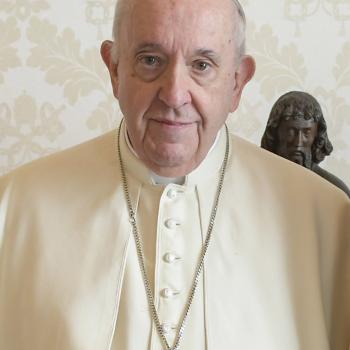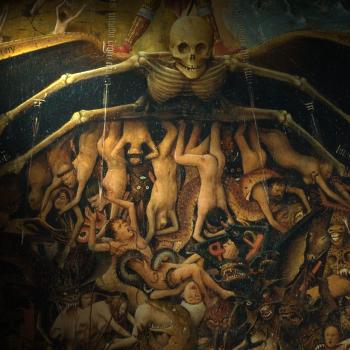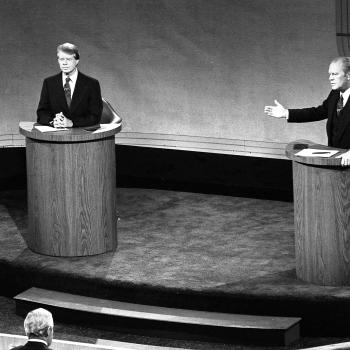The war in Ukraine has called attention to the country’s religious life and its history. Most air time is giving to the Orthodox church, about which my colleague Nicholas Denysenko is a leading expert. But to understand the struggle going on, one must also recognize that Ukraine’s Greek Catholic church, which worships like the Orthodox but is under Rome’s authority, has long vexed Moscow. I treat the persecution of this community under Stalin in a current book project—Unholy: Secularist Violence in Modern History (Yale UP). Herewith a snippet from the book:
Before Bolshevik Revolution of 1917, around eleven million Catholics lived in the Russian Empire, most of them ethnic Poles, Ukrainians, Lithuanians, Latvians, or Germans, but in smaller numbers among other national groups. Predominantly located in sensitive western and southwestern border regions, the vast majority followed three different worship rites: Latin, Armenian, and Greek (or Byzantine). Shifting western border configurations between the Great War and 1945 resulted in sometimes more, sometimes fewer Catholics under Soviet authority. The Soviet republics of Ukraine and Lithuania stood out for having populations with especially high percentages of Catholics. Lithuanians observed mostly the Latin rite; Ukrainians, the Greek or Byzantine or “Uniate” rite, although they were in communion with Rome and under the authority of the Pope since the Union of Brest (1595-96). Their existence had long vexed the Russian Orthodox clergy, who tended to regard things Catholic as worrisomely Westernizing.
For their own reasons, Bolsheviks regarded the Catholic Church as an implacable enemy. Not only was it a time-tested manufacturer of religious “opium,” but early Soviet leaders saw it as a major obstacle to the global spread of communism and the attainment of more immediate foreign policy goals, while also impeding the internal consolidation of their regime. These concerns built on the fact that Marxists and other nineteenth-century radicals despised “Rome” as the symbolic center of political reaction. The Vatican’s global reach and its own claims to universality, to say nothing of its ties to non-Russian ethnic identities, presented additional reasons for Bolshevik disapprobation.
No surprisingly, therefore, Ukraine’s Greek Catholics experienced heavy persecution, but of a peculiar religio-political sort. In 1944 Soviet forces reoccupied Galicia in Western Ukraine, home to around four million Greek Catholics, aggregated into four dioceses under one metropolitan, ten bishops, and some 3,000 priests, in addition to boasting of 127 monasteries and five seminaries. In a series of cunning policy maneuvers that would have bedazzled Machiavelli, Stalin instrumentalized the Moscow Patriarchate (revived from the dead to foster wartime nationalism) to do his bidding by urging and ultimately coercing all Ukrainian Greek Catholic churches to return to the Orthodox fold—something planned earlier in the war when Soviet forces first occupied Galicia and assigned to state-security organs charged with strict secrecy.
Presumably, it was better in Stalin’s eyes—and in those of his chief underling in Ukraine at the time, Nikita Khrushchev–to deal with one morally compromised church in a controlled framework than with two with similar ones, even if there is something patently absurd about a party-state committed to Marxist-Leninist atheism entering into complex theological issues of Christian ecclesiology and helping foster a “reunion.” The additional fact that the Greek Catholic hierarchy encouraged Ukrainian nationalism incensed Stalin (as it does Putin today), inclining him to adopt policies that mirrored those of past tsars, who had pushed for a similar reunion in the nineteenth century. The Moscow Patriarchate fell in line, intoxicated by theological predilection, political pusillanimity, and sudden opportunity.
When the Ukrainian Greek Catholic churches refused reunion, actions by the Kremlin and Moscow Patriarchate—the former clearly running the show as archival evidence has made clear–sought to bring them to heel. In fact, it began beforehand: in the fall and winter of 1944 when many Greek Catholic priests discovered that they were summoned to mandatory regional meetings organized by NKVD (the predecessor to the KGB) agents to hear speakers disparage the papacy and Roman Catholicism. And then on 11 April 1945, Soviet authorities acted aggressively, arresting the entire Greek Catholic hierarchy in their territories, including the Metropolitan Josef Slipyi, who had recently replaced the respected former Metropolitan Andrey Sheptytsky (d. 1944). The arrest, torture, and deportation of hundreds or parish priests followed, while seminarians found themselves conscripted for military service. Police searches of the Cathedral and Episcopal Palace in L’viv and Stanislav took place in this context, resulting in the confiscation of valuables and archival material. The arrested bishops languished in prison for a year without trial before being convicted in 1946 of collaborating with German forces and given various sentences of forced labor, from which only Metropolitan Slipyi survived. Some parish priests finished their sentences, but the majority perished or simply disappeared, while a similar fate befell many monks and nuns, reflecting a concurrent, brutal campaign against Greek Catholic monasteries.
With the Greek Catholic Church in Soviet territories virtually leaderless and thrown into confusion, “patriotic” new leaders emerged, willing to work toward reunion with Moscow under the auspices of a “Sponsoring Group for the Re-Union of the Greek Catholic Church with the Russian Orthodox Church.” Led by the L’viv priest Havryil Kostelnyk, long browbeaten and compromised by Soviet security organs, the group proclaimed itself as the only legitimate legal church leadership and began preparing for a conference (sobor) of reunion. This conference took place on 8-10 March 1946, after which the Ukrainian Greek Church merged with the Russian Orthodox Church. Recalcitrant priests not already in diaspora were either driven underground into a “catacomb church” or arrested by Soviet security forces.
A mop-up operation followed, in which all Greek Catholic monasteries were closed, some later turned into Orthodox monasteries. For the remainder of the Soviet Union’s existence, the Ukrainian Catholic Greek Church was officially forbidden—an example of “ethnic ecclesicide,” to use a locution of the historian Bohdan R. Bociurkiw. The repressed clergy shared the fate of nearly half a million Western Ukrainians, forcibly resettled from Galicia and often dispersed into work camps. While a catacomb church managed to survive in the late Soviet period, its adherents were closely monitored, interrogated, and sometimes assaulted by security forces. Only at the height of Gorbachev’s reforms in 1989 did Greek Catholics regain their legal existence.
One might plausibly wonder if the Soviet Union’s strange and severe policy toward the Ukrainian Greek Catholic Church represents a deviation from Marxist-Leninist teaching on religion and a reversion to traditional Russian caesaropapism. In some respects, perhaps, and certainly the forces of Ukrainian national separatism and Russian Realpolitik figure into the mix. But a contrapuntal point by Bociurkiw is more apposite: “[W]hile it might be argued [in the case of the suppression of the Ukrainian Greek Catholic Church] that the Church-State partnership was the result of Stalin’s deviation from the Marxist-Leninist line on religion, even in the choice of methods to effect the ‘reunion,’ one can detect a basically anti-religious tendency of displaying the practical superiority of force over belief, of politics over religion, of opportunism over martyrdom, not to mention the compromising of a Christian church by having it join with an avowedly atheist regime in destroying another Christian church.”
Again, Machiavelli would have been impressed.


















